What Is a Webcast Software? [Definition, Meaning & Use Cases]
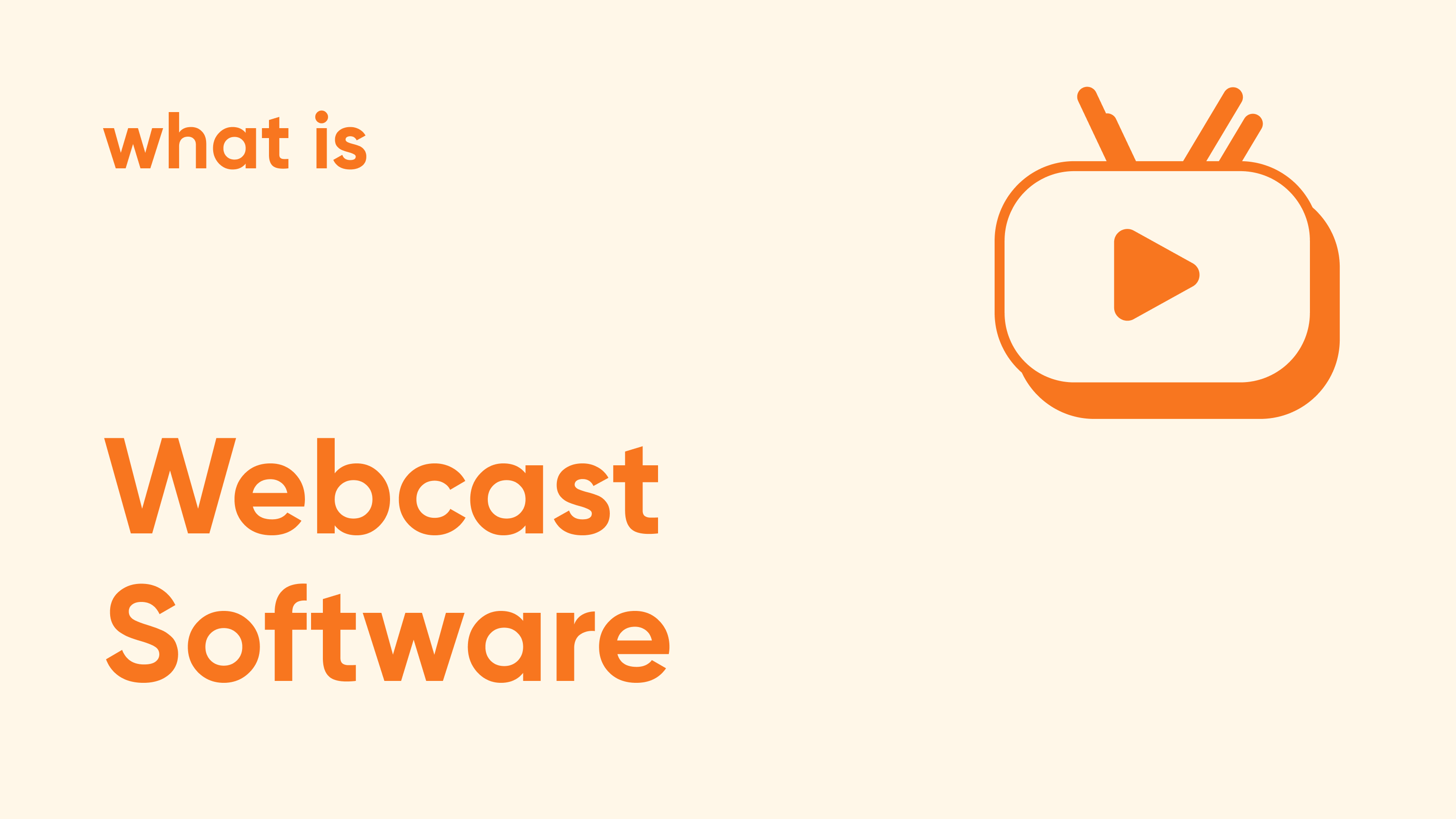
Introduction
In May 2024, ServiceNow used a live webcast software to unveil its latest AI-powered platform updates during its flagship event, Knowledge 2024. Broadcast globally via platforms like LinkedIn Live and replayed on-demand, the event reached tens of thousands of viewers well beyond the 20,000 attendees present in Las Vegas. From keynote demos to product deep-dives, every session was designed to showcase how ServiceNow drives workflow automation through generative AI. The webcast format allowed the company to deliver consistent, branded messaging across all regions, while also fuelling its content strategy for months. Combined with the company’s 21% year-over-year subscription revenue growth, it’s a clear sign: webcasting has become a critical channel for high-impact product communication.
As digital-first strategies take over B2B marketing webcasts are becoming the go-to format for companies that need to communicate at scale without losing clarity, consistency, or control. But despite their growing popularity, many marketing teams still ask the same question: what is webcast software and how is it different from webinars or traditional live streams? If you’ve ever launched a campaign, hosted an internal event, or tried to make video work at scale, this is a topic worth your time.
In this guide, we’ll walk through what makes a webcast different, how the technology behind it works, and why it’s critical to building modern marketing programs. We’ll explore the types of events best suited for webcasting, the features to prioritize when choosing a platform, and how tools like Contrast go beyond simple streaming to power engagement, conversion, and content repurposing. Along the way, you’ll get practical tips, expert comparisons, and a clear vision of how webcasting fits into your strategy.
Let’s dive in.
What Is a Webcast? Definition and Key Concepts
A webcast is a digital broadcast. Imagine a live TV show but online, and tailor-made for businesses. It’s a one-way format that allows a presenter to share video and audio content with a large audience.
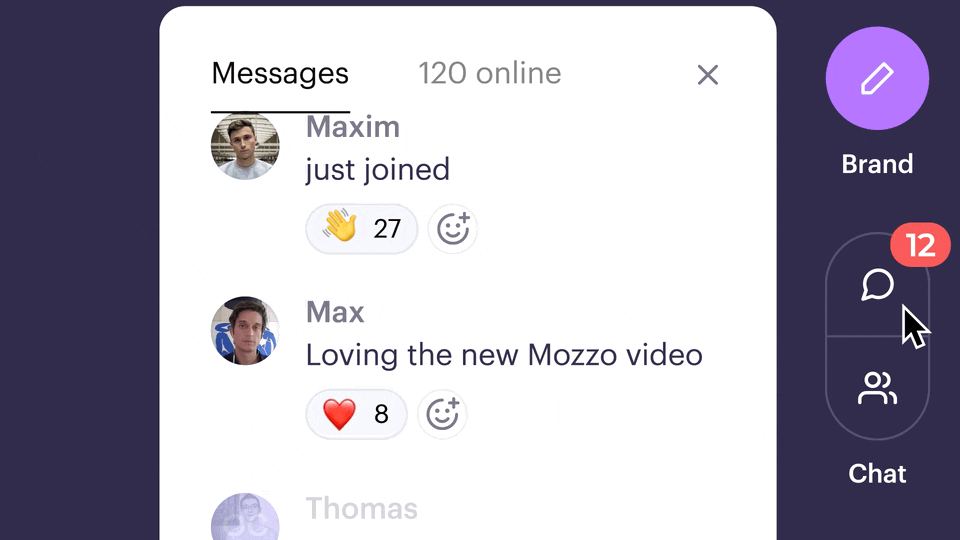
You can stream it live or make it available on-demand. It’s perfect for events like leadership talks, virtual product launches, or company announcements. And unlike casual live streams, webcasts are polished and controlled. In fact, 94% of SMBs now rely on virtual meetings to reduce costs and save time further proving that webcasting is becoming essential to modern business communication.
Webcasting Meaning in the Digital Media Landscape
In today’s digital world, brands compete not just for attention but for trust.
A webcast creates a focused, secure, and branded space to deliver high-value messages. It’s less about chatting in real time and more about reaching your audience with clarity and impact.
Think of it like a keynote presentation only your audience can join from anywhere in the world. It’s high-quality, rehearsed, and built to scale.
How Does Webcast Software Work?
Webcast software might seem complex at first. But in reality, it’s a powerful tool that combines streaming tech and user-friendly features to deliver a seamless experience.
With the right platform, hosting a webcast feels less like running a live TV station and more like building a simple marketing campaign. Everything you need is in one place.
Overview of Webcasting Solutions: From Streaming Services to Encoders
A webcasting solution is a platform that streams video and audio over the internet. Some are basic, offering only the bare minimum. Others include encoding, analytics, customization, and distribution in one system.
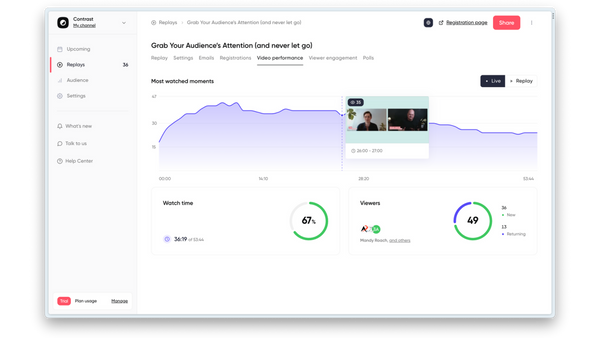
The best tools let marketers manage every step of the process from setup to post-event reporting without relying on IT teams or production studios.
Key Components: Software, Hardware, and Streaming Infrastructure
To host a webcast, you need three core elements:
- Software: to organize and deliver your content
- Hardware: such as cameras, microphones, and encoders
- Streaming infrastructure: usually cloud-based services that ensure your webcast reaches viewers without glitches
Together, these components make sure your message gets delivered clearly, smoothly, and at scale.
User Interface and Workflow: Setting Up a Live or On-Demand Stream
You don’t need to be a tech wizard to set up a webcast. The best platforms offer drag-and-drop tools, brand customization, and smart scheduling options.
Launching a live or on-demand event should feel as simple as building a landing page or sending a newsletter. With the right workflow, your team stays focused on content not tech.
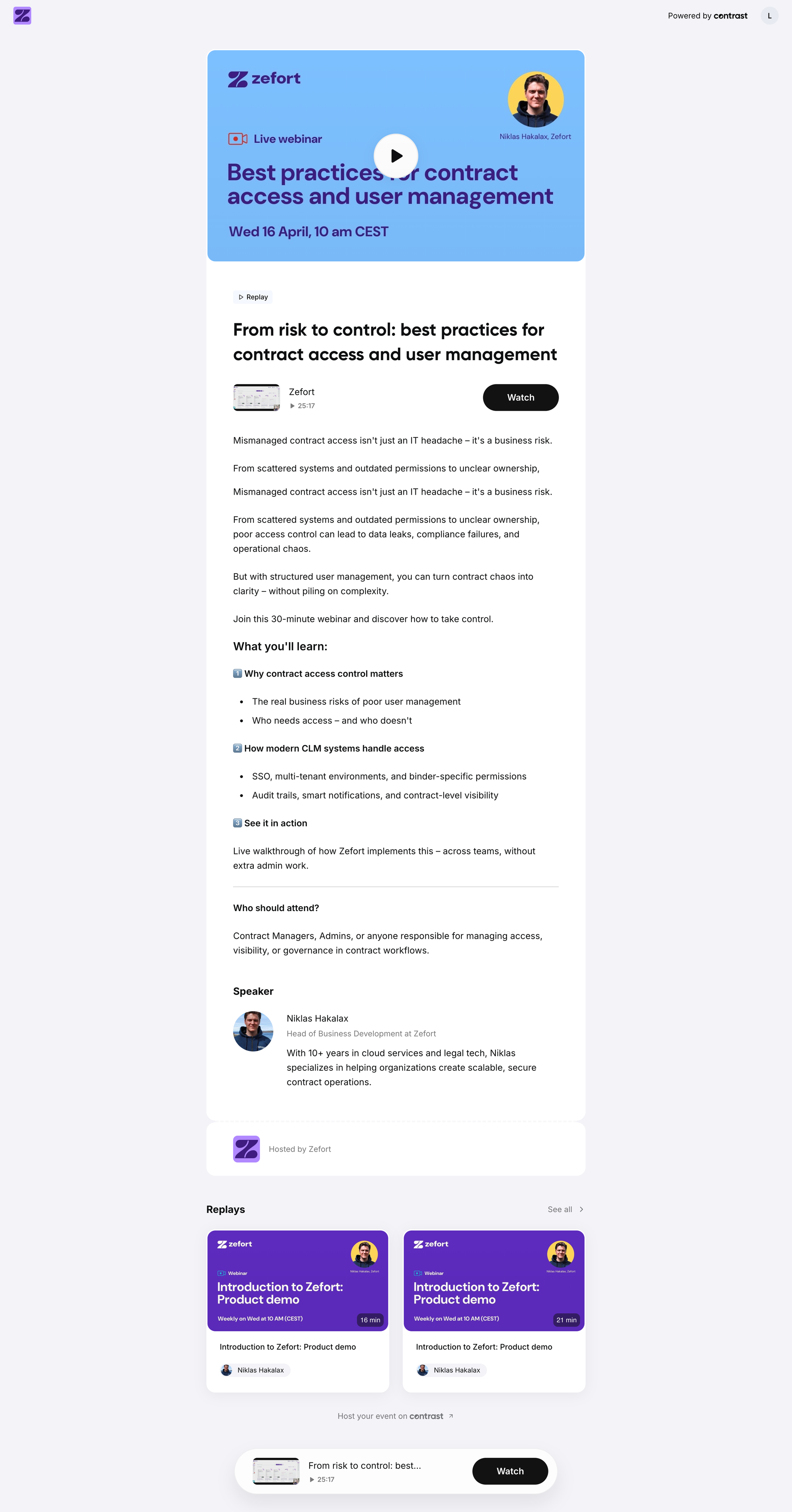
What Tools Do You Need to Host a Webcast?
Here’s a short checklist of what you need to get started:
- A high-quality camera
- A reliable microphone
- A strong internet connection
- An encoder, either software or hardware
- And a webcasting platform to bring it all together
With these essentials, you can host a webcast that feels professional, polished, and ready for any audience size.
What Are the Benefits of Webcasting for Marketing Teams?
Webcasting is more than just a way to share information. For marketing teams, it’s a chance to scale their reach, strengthen their brand, and build real engagement all in one go.
A well-executed webcast can outperform blogs, emails, and static videos. Here’s how it drives results.
Reaching a Global Audience with High-Quality Digital Video
Webcasting helps you reach thousands of people without booking a single flight. It removes borders and logistics, offering you a global stage at a fraction of the cost.
Your audience gets crisp video and clear audio. You get more control over your message, your delivery, and your branding. According to Entrepreneur, 70% of B2B marketers report a positive ROI from video marketing, showing that webcast software isn’t just scalable it’s profitable too.
Enhancing Audience Engagement Through Interactive Features
Many webcast platforms now include features like live Q&A, polls, and chat. These tools invite your audience to participate, not just watch.
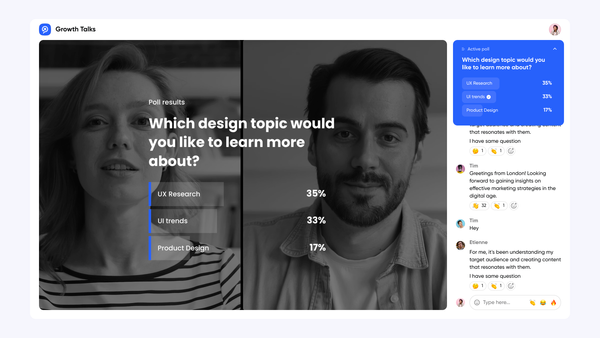
When people engage, they remember. And when they remember, they take action. That’s how webcasting turns attention into outcomes.
Scaling Communication: Large-Scale, One-to-Many Live Events
Need to share a message with your entire company? Or announce a product to thousands of customers? Webcasting scales without compromising quality.
It’s your best tool for one-to-many communication clear, fast, and efficient.
Repurposing Content for Ongoing Lead Generation
Webcasts don’t stop working after the live event ends. Recordings can be reused as:
- Lead magnets
- Nurturing content
- Social media clips
- Training resources
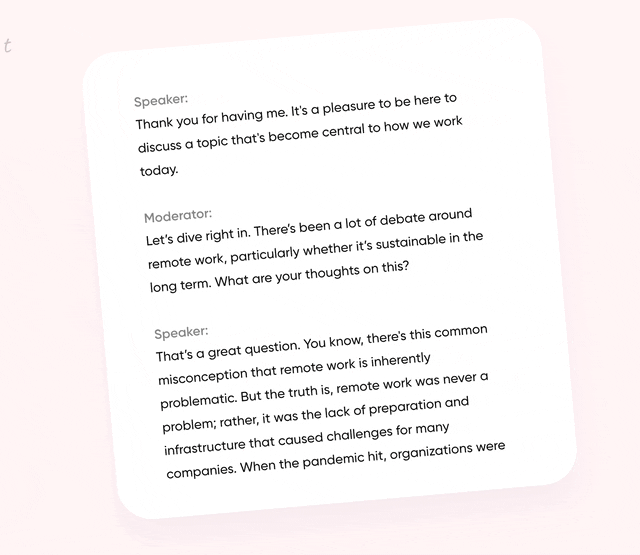
Every webcast is a chance to create a library of evergreen content that keeps delivering value long after the event.
What Types of Events Can Be Webcasted?
Webcasting isn’t limited to company announcements. It’s a flexible format that fits almost any event with a message and an audience.
From high-stakes product launches to everyday internal updates, if it can be said live, it can be webcast.
From Virtual Events to Product Launches: Top Webcast Use Cases
Launching something new? A webcast lets you create a branded, professional experience that builds excitement and visibility.
You can walk through product features, host guest speakers, or share behind-the-scenes insights. It’s all live and global.
Hosting Town Halls, Seminars, and Conferences Online
Internal communication matters just as much. Webcasting your town halls or leadership updates makes sure everyone hears the same message at the same time.
And if you're hosting educational seminars or webinars or full-scale conferences, going virtual saves time, budget, and travel headaches without sacrificing impact.
Broadcasting Live Events That Matter to Your Audience
Not every event has to be formal. Customer stories, expert interviews, fireside chats all of these build trust and show your brand’s human side.
With the right setup, your team becomes the broadcaster, and your brand becomes the channel people tune into. Even post-pandemic, Forbes reports that virtual and hybrid events remain crucial for reaching wider audiences and building stronger brand connections.
How to Host a Successful Webcast
A great webcast doesn’t just happen. It takes planning, practice, and the right tools. From tech setup to audience interaction, every detail counts.
Here’s how to make sure your next webcast feels polished, professional, and powerful.
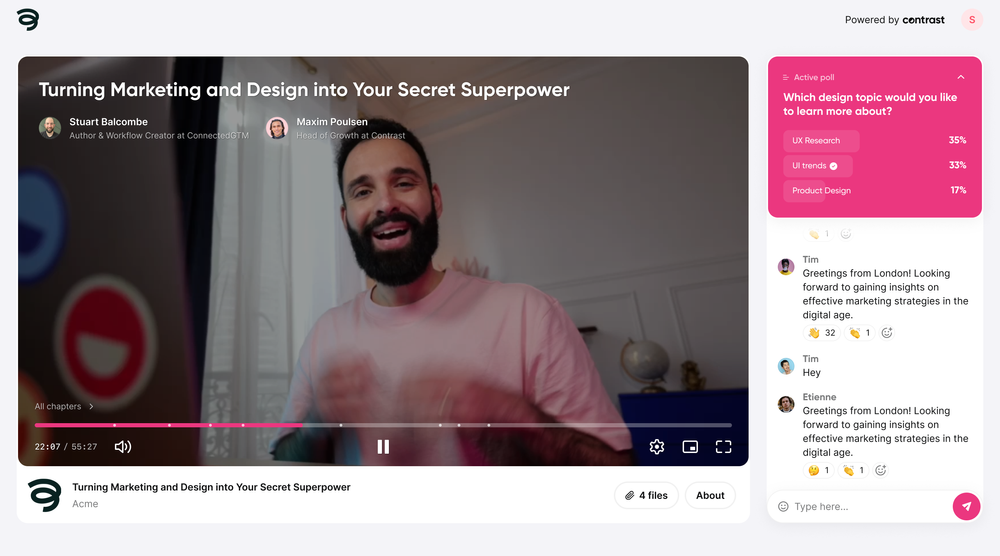
Preparing for a Live Event: Hardware, Streaming Platform & Presentation
Start with the basics. You’ll need a good camera, clear audio, solid lighting, and a reliable internet connection. These things seem small, but they make a big difference on screen.
Next, choose a platform that fits your goals. Look for one that’s built for marketers, not just IT teams. This aligns with findings that 94% of small and mid-sized businesses use virtual tools to enable faster and easier coordination across teams. Then prep your content slides, demos, transitions. Every second of screen time is a chance to connect.
Managing Audience Size and Real-Time Engagement
Webcasting can handle 50 viewers or 50,000. But that reach is only meaningful if people stay engaged.
Use features like live chat, polls, or moderated Q&A to keep things interactive. When your audience feels involved, they’re more likely to stay tuned and to come back next time.
Best Practices for Recording, Replay, and Post-Event Content
Always record your webcast. Why? Because on-demand is where the real reach happens. Most people won’t attend live, but they’ll watch the replay if it’s easy to find and worth their time.
How many people can attend a webcast? Technically, it depends on your platform. But practically, the real limit is your ability to deliver content people care about. That’s what scales.
Features to Look for in a Modern Webcasting Platform
Choosing the right platform is like choosing the stage for your brand. It’s not just about broadcasting it’s about delivering a great experience, from first click to final replay.
Here’s what a modern webcasting platform should offer to meet today’s marketing needs.
Audio and Video Quality Standards
If your video lags or your audio cuts out, your message gets lost. That’s why HD video and broadcast-quality sound should be non-negotiable.

Your audience won’t just remember what you said they’ll remember how it felt to hear and see it.
Live and On-Demand Capabilities
People are busy. Most won’t join you live. A strong platform lets you offer live events and high-quality replays, with smooth transitions and no technical hiccups.
Make it easy to watch on their schedule, and they’re far more likely to come back.
Advanced Analytics and Audience Tracking
You’re not just streaming you’re marketing. That means you need data.
Look for tools that offer deep analytics, including watch time, engagement actions, and lead scoring. Even better if it connects directly to your CRM.
Custom Branding and Personalization Options
Your brand should be front and center. Choose a platform that lets you customize the viewer experience, from player colors to layout to branded assets.
Every detail adds up to a more consistent and memorable message.
Integration with Your Marketing Stack (CRM, MA, CMS)
Webcasts aren’t one-offs. They’re part of your funnel.
Make sure your platform integrates with the rest of your tools like HubSpot, Salesforce, or Marketo so your data flows smoothly and your leads don’t get lost.
Security and Compliance: What You Need to Know
Enterprise audiences expect enterprise security.
Look for features like SSO, GDPR compliance, access control, and data encryption. It’s not just IT-friendly it’s brand-protecting.
Accessibility and Multi-Device Experience
Webcasts need to be inclusive. That means mobile compatibility, captioning, and a user-friendly experience across all devices.
Don’t limit your audience welcome them, wherever they are.
Choosing the Right Webcast Software: A Buyer’s Guide
There’s no shortage of webcast tools out there. But not all of them are designed with marketers in mind. Choosing the right platform means thinking beyond features and focusing on outcomes.
Here’s how to make a smart, strategic decision.
Key Evaluation Criteria Based on Your Marketing Goals
Start with your “why.” What are you trying to achieve lead gen? Product awareness? Customer education?

Your webcast platform should support those goals directly. That means intuitive workflows, robust analytics, and features built for engagement not just delivery.
Common Mistakes to Avoid When Selecting a Webcasting Solution
Don’t get distracted by flash over function.
Avoid tools that:
- Make you rely on IT for setup
- Lack audience analytics
- Don’t connect to your marketing tools
- Are designed for corporate comms, not growth teams
Choose a solution that’s built for how your team actually works.
Questions to Ask Before You Choose a Streaming Service
Before you commit, ask:
- Can it handle both live and on-demand formats?
- What engagement data will I get and how deep is it?
- Does it plug into my CRM and marketing automation tools?
- Is it really designed for marketers, or just adapted for them?
You want a tool that works for your team not one your team has to work around.
Comparison of Top Webcast Platforms (Contrast vs. Competitors)
Zoom and ON24 might do the job but Contrast was built for marketing from the ground up.

It combines interactivity, analytics, and content repurposing in one sleek, intuitive platform. No compromises. No hacks. Just performance, built-in.
Webcasting vs Web Conferencing: What’s the Difference?
Webcasting and web conferencing may sound similar, but they serve very different purposes. Knowing when to use one or the other helps you get the right outcome every time.
Here’s how to tell them apart.
Streaming Media vs. Conferencing Software: Core Differences
A webcast is designed for broadcasting. It’s one-to-many, controlled, and polished. Great for when your message needs reach and consistency.
A web conference is collaborative. It’s many-to-many, interactive, and informal. Ideal for meetings, working sessions, and internal communication.
When to Use Webcasting Platforms vs. Video Conferencing Tools
Use webcasting when you want to speak at scale think announcements, launches, or public-facing events.
Use web conferencing when the goal is discussion like workshops, feedback sessions, or team meetings.
Live Streaming Formats: Broadcast vs. Interactive Use Cases
Webcasts feel like TV. Conferences feel like calls. The tools and the tone matter. Pick the format that matches your audience and objective.
Webcasting vs Webinar: What's the Difference?
Webcasts and webinars are often confused, but they’re built for different audience experiences. One prioritizes scale, the other thrives on interaction.
Both are valuable. The best platforms will allow you run both.
Webcasting: One-to-Many Digital Broadcasting
A webcast is built for mass communication. You speak, the audience listens. Perfect for big updates or brand events that need control.
It’s like hosting your own TV channel clean, branded, and broadcast-quality.
Webinars: Interactive, Two-Way Online Events
The best webinar is about engagement. Expect Q&A, live polls, chat, and back-and-forth.
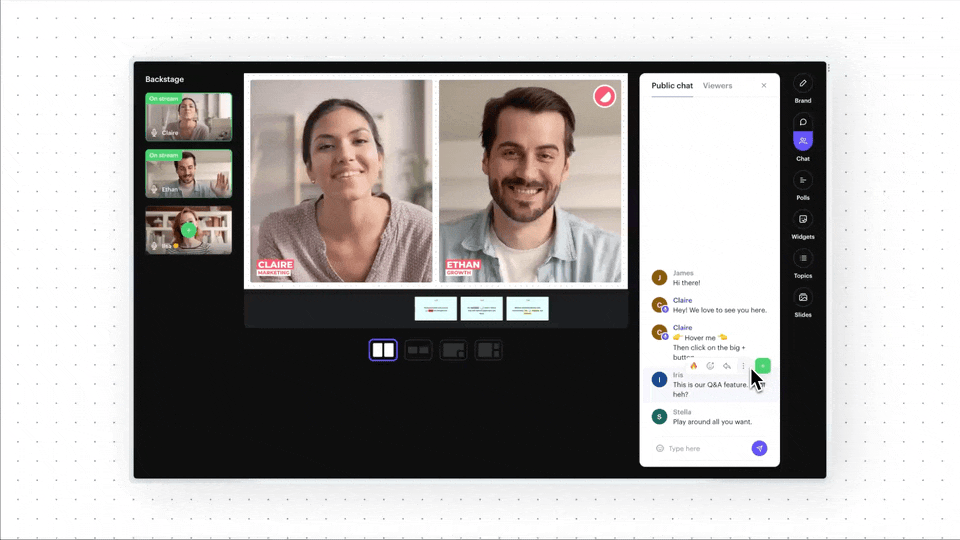
They’re great for product demos, onboarding, and education anywhere you want your audience to ask questions and participate actively.
Which Format Fits Best? Marketing Use Cases Compared
Need reach and control? Go with a webcast.
Want dialogue and feedback? Run a webinar and follow the best practices.
Use the right format for the moment and your message will always land better.
Why Contrast Is the Ideal Alternative to Traditional Webcasting
Let’s be honest most webcast platforms weren’t built with marketers in mind. They’re clunky, rigid, or stuck in the past.
Contrast changes that. It combines the scale of a webcast with the engagement of a webinar and wraps it in a marketer-first design.
More Than Streaming: Contrast Combines Interactivity with Scalability
With Contrast, you don’t just stream you create an experience.
Real-time polls, chat, branding, and sleek layouts help you go beyond passive viewing. Your audience isn’t just watching they’re part of the moment.
Simulive Webinars: The Best of Pre-Recorded and Live
Want the control of pre-recorded content with the energy of live interaction? Contrast makes that easy.
You can play a polished video and jump in for live Q&A all in the same event. It’s smooth, flexible, and built for teams that care about quality.
Built for Repurposing: Turn One Webinar into Many Content Assets
Every event you host with Contrast becomes a content goldmine.
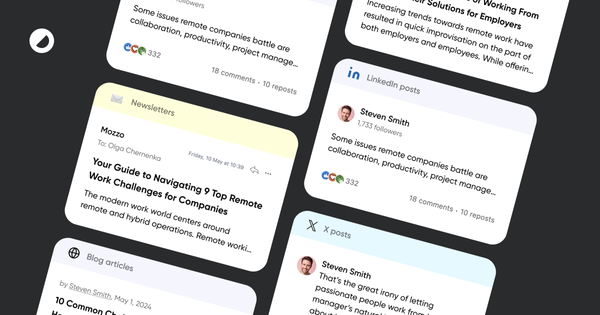
You can clip highlights, export recordings, and turn your session into email campaigns, social posts, or evergreen lead magnets. Your content works harder with less effort.
Marketing-Ready: Integrated, Measurable, and Conversion-Focused
Contrast plugs into the rest of your stack. That means CRM integration, performance metrics, and audience tracking are all part of the flow.
It’s not just a broadcast tool it’s a pipeline builder.
Building Your Webcasting Strategy
A webcast isn’t just a one-time event it’s a content engine. When you think strategically, you unlock its real power: consistency, scale, and ROI.
Here’s how to make webcasting part of your long-term marketing plan.
Where Webcasting Fits in the B2B Marketing Funnel
At the top of the funnel, webcasts help you build awareness and reach. Think virtual keynotes or thought leadership sessions.
In the middle, they’re great for product education, customer success stories, and retention. The format adapts to your message and your stage in the funnel.
Content Ideas for Every Funnel Stage
- TOFU: Industry panels, branded virtual events
- MOFU: Product walkthroughs, feature spotlights
- BOFU: Case study deep dives, live demos, onboarding sessions
Plan with intent, and every webcast becomes a purpose-built conversion touchpoint.
Measuring Success: Webcast KPIs and Performance Benchmarks
Metrics matter, for webcasting or webinar statistics. Track:
- Registrations and attendance
- Viewer drop-off points
- Engagement: chat, Q&A, poll responses
- Replay views and content reuses
- Pipeline or influenced revenue
A Forbes study found that 56% of executives expect analytics to drive at least 10% of their revenue growth showing how webcast performance tracking directly supports business outcomes. When you know what’s working, you can scale with confidence.
The Future of Webcasting in Digital Marketing
The role of video in marketing is only getting bigger. And webcasting is leading the way.
Here’s what to expect and how to stay ahead.
Trends to Watch: AI, Personalization & Simulive Streaming
AI is helping marketers personalize live content in real time. Simulive formats are growing fast, offering the control of editing with the energy of live.
Expect platforms to get smarter faster and your audiences to expect more.
The Rise of Streaming Media in Demand Generation
We’ve moved past static content. Streaming is now part of active lead gen and nurturing strategies.
People don’t just want to read they want to watch, react, and interact. That makes video your most powerful asset.
Staying Ahead with Video-Centric Marketing
The teams winning in B2B are thinking video-first. They’re building content hubs, repurposing assets, and treating webcasts as strategic campaigns.
Webcasting isn’t just a format it’s a mindset shift. And it’s here to stay.
Ready to scale your message with modern webcasting? Book a demo and see how Contrast helps you run high-impact, branded webcasts that engage audiences and fuel your content strategy.


